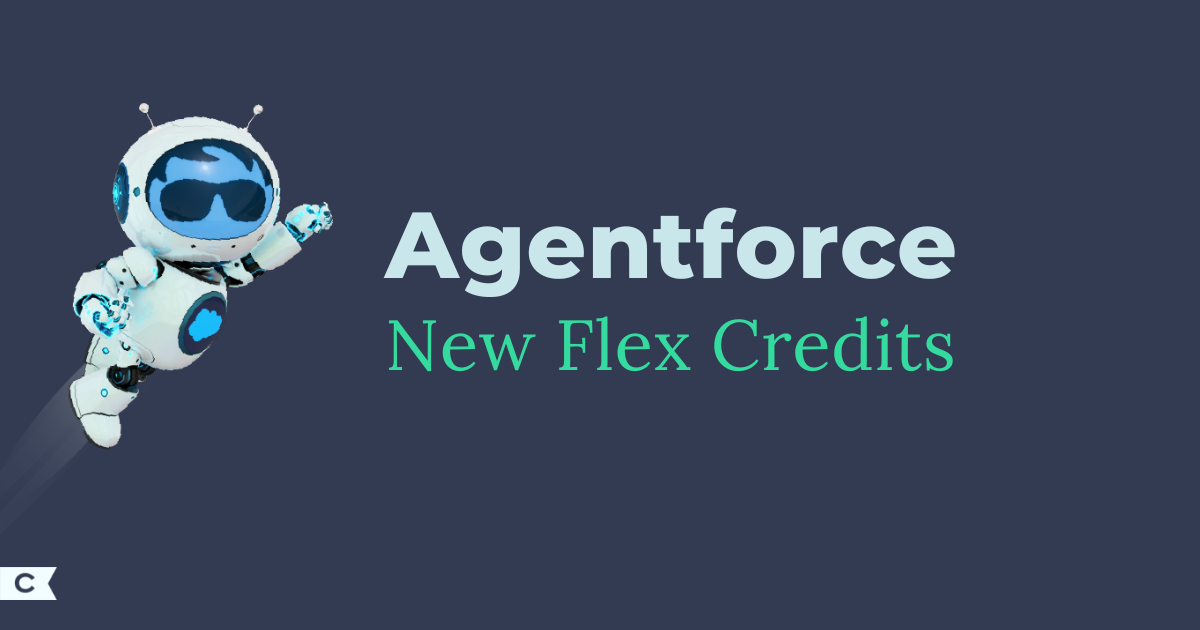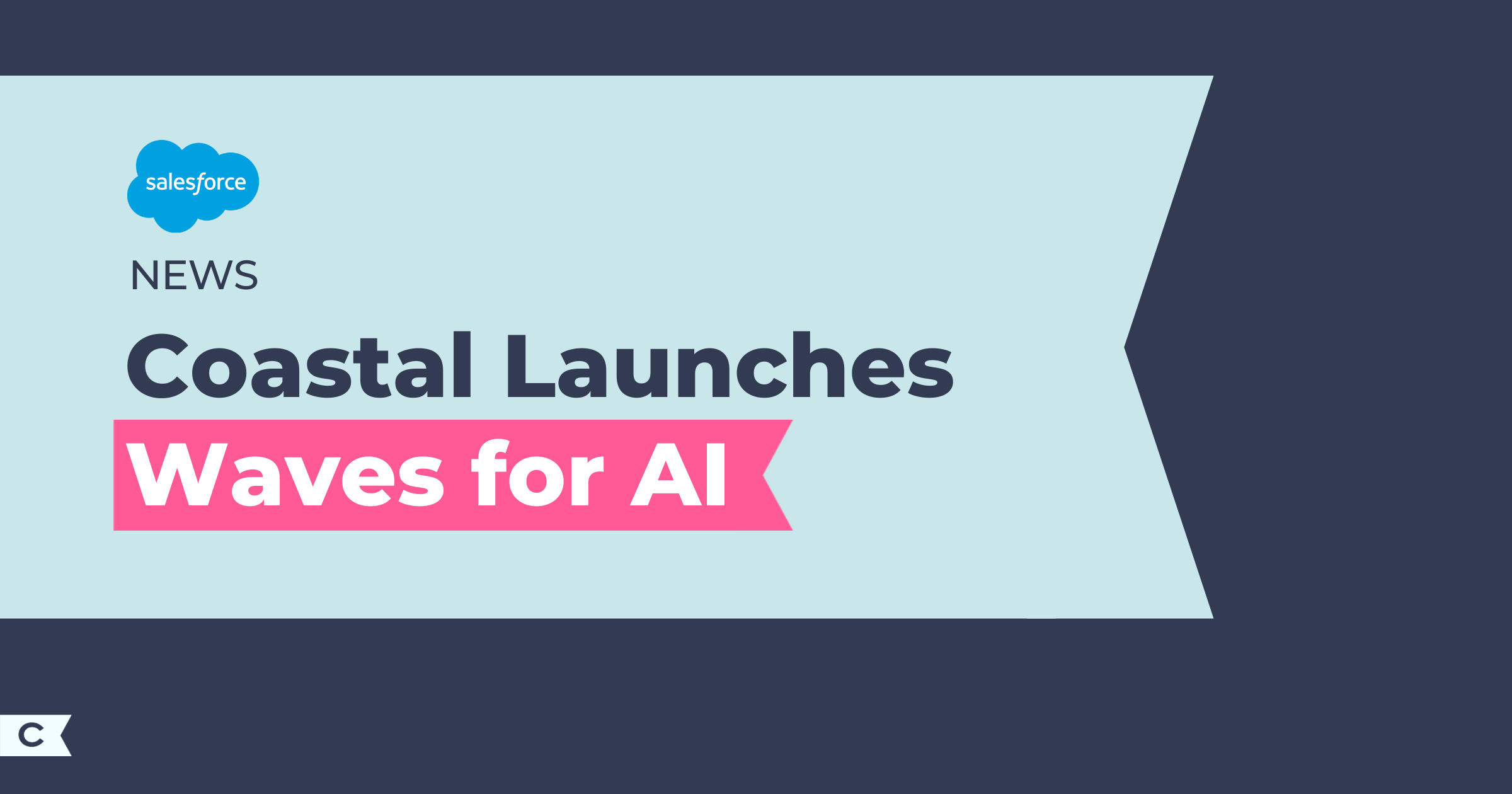Salesforce has officially unveiled a new flexible pricing model for Agentforce and its broader generative AI capabilities, moving away from the previous per-conversation charge. This shift is designed to offer more transparency, align costs with actual usage, and provide businesses with greater flexibility as they scale their AI adoption. As a member of the Agentforce Partner Advisory Board and one of the first partners deploying Agentforce, Coastal is here to break down what these changes mean for your organization.
From Per-Conversation to Flex Credits: Understanding the Shift
Previously, Agentforce was priced at $2 per conversation. While straightforward, this model raised questions about what constituted a “conversation” and didn’t always reflect the varying complexity and resource consumption of different AI interactions. A single-question interaction was treated the same as a lengthy, multi-turn exchange within a 24-hour period.
The new Flex Credits model aims to address these challenges by aligning costs more closely with the underlying token-based pricing used by most large language model (LLM) providers, including OpenAI, which currently powers Agentforce. Instead of a flat per-conversation fee, customers will now consume Flex Credits based on the specific “actions” Agentforce performs.
According to Salesforce’s announcement, one Agentforce action consumes 20 Flex Credits, which is roughly equivalent to $0.10. Flex Credits are available in packs of 100,000 for $500. This consumption-based model means that simpler interactions will cost less, while more complex ones will cost more, offering a more equitable approach.
How Flex Credit Costs Are Calculated
Understanding how these credits translate to cost is key. Here’s a breakdown:
- Token-Based Core & Limits: At their core, Flex Credits are token-based. Each action has an allowance of up to 10,000 tokens (roughly equivalent to 8,000 words or about 22 pages of text). If an action exceeds this generous limit, it may consume additional Flex Credits. This detail is crucial for managing complex interactions.
- Action-Based Consumption: Flex Credits are consumed only when an Agentforce agent executes a specific task or “action.” This means simple interactions like “Hi” or “Thank you” that don’t trigger a defined agent action will not incur charges.
- Rate Card for Actions: According to the current Salesforce Flex Credits Rate Card for Agentforce, both “Standard Actions” (out-of-the-box Salesforce actions) and “Custom Actions” (built by customers or partners) consume 20 Flex Credits per action in a production environment.
- Sandbox Usage: When using Agentforce in a Sandbox environment, actions consume credits at a reduced rate: 16 Flex Credits per Standard or Custom Action, which is 80% of the production cost.
- Purchasing Flex Credits: Flex Credits are available in packs, for example, 100,000 credits for $500, making each production action approximately $0.10.
This model offers transparency, as you pay for the work the agent does. It can be more equitable, as simpler interactions that require fewer resources will inherently cost less than more complex, multi-action, or token-heavy exchanges.
New Licensing for Internal Users
A significant aspect of this announcement is the introduction of a new Agentforce user license model for internal users. This model is designed to provide unlimited usage capabilities for employees leveraging Agentforce within the Salesforce ecosystem. The goal is to make AI tools “sticky” for internal teams, encouraging widespread adoption and empowering employees to use Agentforce extensively to interact with the platform without worrying about incremental costs for each interaction.
While full details on the pricing and tiers of these user licenses are expected at general availability, the press release mentions “Agentforce for Sales, Service, and Industries” and “Agentforce 1 editions.” It’s anticipated that there might be different tiers, with “Agentforce 1 editions” potentially offering the unlimited usage component.
The “Flex Agreement”: Adapting to an AI-Driven Future
Salesforce is also introducing a Flex Agreement, a strategic move acknowledging the evolving landscape of AI in business. This agreement will allow organizations to more easily shift investments between traditional user licenses and AI-driven digital labor (Flex Credits) as their business priorities and AI adoption strategies change. This offers businesses the agility to adapt their Salesforce contracts without complex renegotiations, particularly for longer-term agreements, providing predictability for Salesforce and flexibility for customers.
Key Questions and What We’re Watching
While this announcement provides a clearer direction for Agentforce pricing, some questions remain until general availability:
- Specifics of Employee Licensing: The exact scope, cost, and differences between various Agentforce employee license editions (e.g., Agentforce for Sales vs. Agentforce 1 for Sales) are yet to be detailed.
- Applicability of Flex Credits: It’s not explicitly stated if Flex Credits will cover other Einstein capabilities, such as Prompt Builder, to create a singular credit model across Salesforce AI tools.
- Predicting and Estimating Consumption: A primary concern for customers will be how to effectively predict and manage their Flex Credit consumption.
Planning for Flex Credits: Estimation Strategies and Demonstrating ROI
Estimating consumption for Flex Credits requires a thoughtful approach, especially as use cases can vary widely. Here are some strategies we’re considering at Coastal:
- Analyzing Existing Conversational Data: For use cases like AI-powered service chat, estimating can be more nuanced. The key is to identify the types of questions currently being asked and the complexity of their answers. If your organization uses Salesforce Cases, Omnichannel, or Einstein Activity Capture for chat and email, this historical data can provide valuable examples of current conversation flows and lengths, offering a baseline.
- Predictability with Embedded AI: When AI is embedded as a step within an otherwise automated process (e.g., summarizing case notes, drafting email responses, enriching lead data), prediction becomes more straightforward. In these scenarios, you can often forecast:
- How frequently these automations run.
- The typical amount of input and output for each AI-powered step. These “embedded AI applications,” while perhaps not as immediately visible as a frontline service agent, can significantly help teams scale, reduce manual effort, and streamline research. They also offer a higher degree of predictability in consumption.
- Starting Controlled and Iterating: For less predictable or new public-facing AI agents, you might start with a more controlled rollout. If consumption exceeds initial estimates or budgets, it’s often easier to temporarily revert an internal automation or scale back certain AI functionalities without massive public-facing disruption. This allows time to re-evaluate the AI’s application and its return on investment (ROI).
- The ROI Imperative: A critical point with consumption-based models is the ability to justify the spend. If your AI solution is consuming more credits, you should be able to demonstrate why this is beneficial. Increased usage should ideally correlate with new value creation (see Coastal’s approach to prioritization)– be it reduced implicit costs elsewhere (e.g., less agent time on repetitive tasks), increased revenue, or improved profit margins. While this might challenge traditional annual budgeting cycles, a strong business case can justify increased AI investment.
Coastal’s Recommendations for Managing Flex Credit Consumption
Beyond estimation, actively managing your Flex Credit usage will be crucial. Here are some initial recommendations:
- Prioritize Agent Actions: When building AI agents, be deliberate about the breadth of actions they can perform. Focusing agents on specific, relevant tasks reduces the likelihood of incorrect or unnecessary actions that consume credits. This is also critical for effective testing.
- Curate Your Knowledge Base: Ensure that the knowledge you import for your agents is directly relevant to the questions you expect them to answer. Avoid dumping excessive, duplicative, or contradictory information, which can lead to confusion and inefficient searches. Every piece of knowledge should have a clear purpose.
- Establish Clear Escalation Paths: Implement clear off-ramps for when an AI agent cannot handle a query. The agent should be instructed to escalate to a human quickly if it lacks the necessary information or capability, rather than prolonging an unproductive interaction. This not only helps you manage credits, but also improves the customer experience.
Partner with Coastal for Your Salesforce AI Journey
The new Agentforce pricing model represents a significant step towards making powerful AI tools more accessible and scalable. At Coastal, we’re excited to help our clients navigate these changes and leverage the full potential of Salesforce AI.
If you have questions about how this new pricing model will impact your Salesforce strategy or want to explore how Agentforce can transform your business, reach out! We’re here to help you innovate and succeed.






